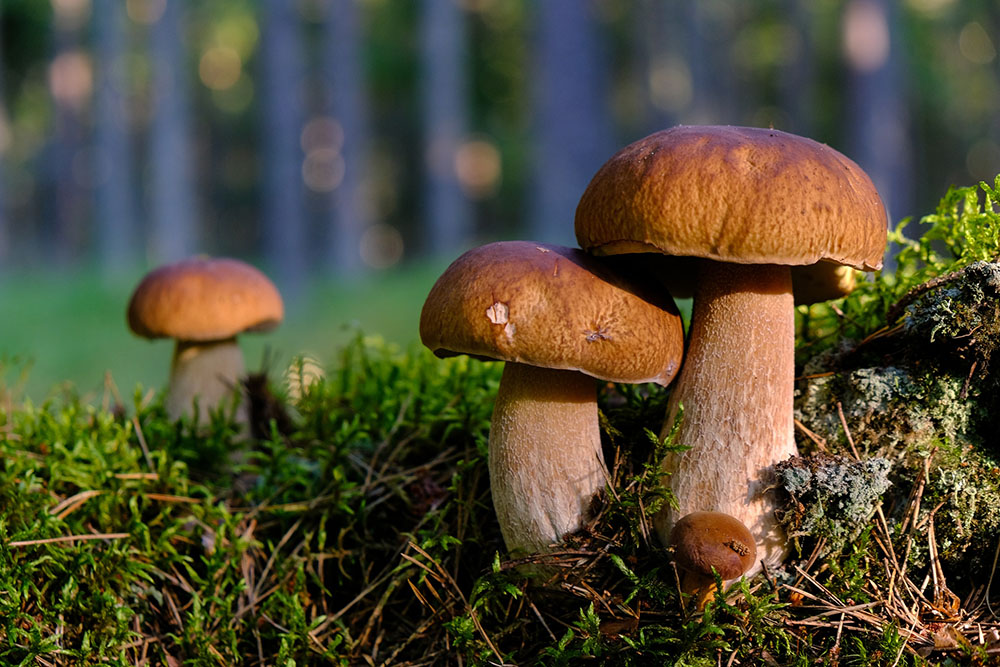
What human salespeople can learn from fungal “sales associates”
Daniella Floss is the manager of Rhizosphere Research at Valent BioSciences. She’s a leading expert on the topic of communication between plants and fungus, and her work is changing the way humans conduct agriculture.
I first heard about communication between plants and fungus from my middle school-aged son, who learned it from his biology teacher. In fact, even scientists have only known about this phenomenon for a few decades, and it’s only been the subject of intense investigation since roughly the early 2000s.
Our understanding may be new, but the phenomenon is as old as dirt - literally. And our understanding of this ancient “technology” could provide insights into how we interact with one another and create better networks for sales - and life.
How plants and fungus initiate communications, and why
I spoke with Floss for a recent broadcast of my show, Stop Killing Deals. She says that she originally became interested in corn diseases caused by microbial pathogens, but eventually decided to focus instead on mutualistic interactions between plants and fungus.
She says plant-fungus communications interested her because she wanted to look at a relationship in which both partners benefit, rather than one preying on the other. The relationship between mychorrizal fungi and plants is based on an exchange of nutrients that they both benefit from.
Floss’s focus is particularly on how the relationship is initiated. Plants and fungus aren’t always interconnected, and they don’t begin life that way. Instead, a complex combination of factors and signaling brings them together.
In simple terms, the fungus spore begins in a microscopic, dormant state in the soil, until it receives signals from a plant. The plant, in turn, only signals if it is in need of nutrients that it knows a fungus can supply. Floss says this usually happens when the plant finds itself in soil that is not able to provide all of the nutrients it needs.
When the plant sends out a signal requesting help, the fungal spore receives that signal and responds. It in turn sends a message to the plant that says, “I’m not a threat and I can help you.”
If the plant agrees to the connection, the spore sends out tiny threads called hyphae that enter the plant’s roots and interconnect with them. Once the connection is established, the plant gives carbon to the fungus (which the fungus cannot produce for itself) in exchange for various nutrients including nitrogen and phosphate, which the plant may not be able to synthesize effectively out of the soil.
Both species benefit and grow. In fact, in a healthy relationship, the connection doesn’t end there. The fungus has the ability to form colonies and then connect with other colonies of fungus that in turn are connected with other plants. Over time, this expanded network of plants and fungus are able to exchange more and more resources and messages, including warning each other of pests or disease.
These networks can expand over hundreds or even thousands of acres to benefit entire ecosystems. Floss’s teams are working to understand these communications better so that they can be used to increase crop yields with less impact on the environment.
What salespeople can learn from fungus
As I was listening to Floss talk about these interactions between fungi and plants, I couldn’t help thinking about the networks that humans build, and the fact that there are good and bad ways to go about it.
Floss originally started studying organisms that cause disease in corn plants. These represent a relationship between two species also - the disease organism and the plant. But it’s a relationship in which one species benefits at the expense of the other.
Too often, in sales, we think of our relationships this way - what can I get from my customer? Even the way we talk about sales reflects this, thinking about ourselves as hunters, as though our customers were prey to be tracked down and harvested.
When Floss switched to studying mychorrizal fungi, she discovered a different world - one in which plants and fungus thrive and grow together, through their connections and beneficial exchanges.
It seems to me that this represents a much better model for sales than the old hunter-prey paradigm. In this model:
- Sellers and buyers are partners, not predator and prey
- Buyers send out “signals” in the form of comments, inquiries, or even just data about their company that can signal sellers that they need something (or we interpret signals from similar companies to be proactive...)
- Sellers “knock on the door” of buyers signalling that they are not a threat, and that they are ready to help
- Buyers allow sellers in and sellers immediately offer them value in the form of resources they can’t access themselves
- Buyers provide resources in exchange for the seller’s offering
- Sellers expand their network to other buyers and sellers, constantly building a robust ecosystem in which buyers and sellers constantly exchange resources and information in order to thrive together
- Everyone grows together
This is the type of relationship and network I believe is better for sellers and for buyers, and it’s the type of network that we’ve striven to facilitate with our software.
When you think about a network like the one described above, what stands out for you? What are your teams doing to build these networks?
If you want to learn more about Floss’s work, you can listen to our show here, or follow her on LinkedIn. And stay tuned to Stop Killing Deals for the next episode, in which I’ll be speaking with sales expert Dave Brock to apply the lessons of the mycorrhiza to sales.

By George Brontén
George is the founder & CEO of Membrain, the Sales Enablement CRM that makes it easy to execute your sales strategy. A life-long entrepreneur with 20 years of experience in the software space and a passion for sales and marketing. With the life motto "Don't settle for mainstream", he is always looking for new ways to achieve improved business results using innovative software, skills, and processes. George is also the author of the book Stop Killing Deals and the host of the Stop Killing Deals webinar and podcast series.
Find out more about George Brontén on LinkedIn







